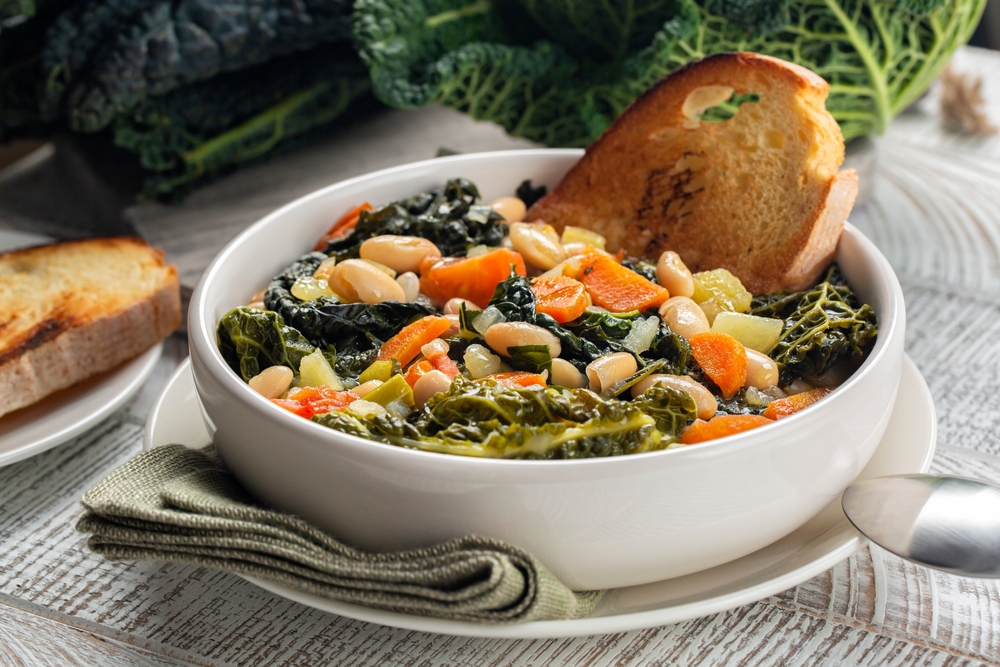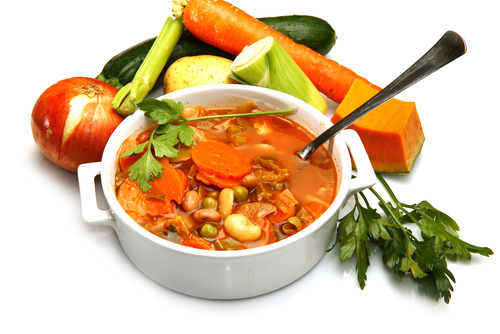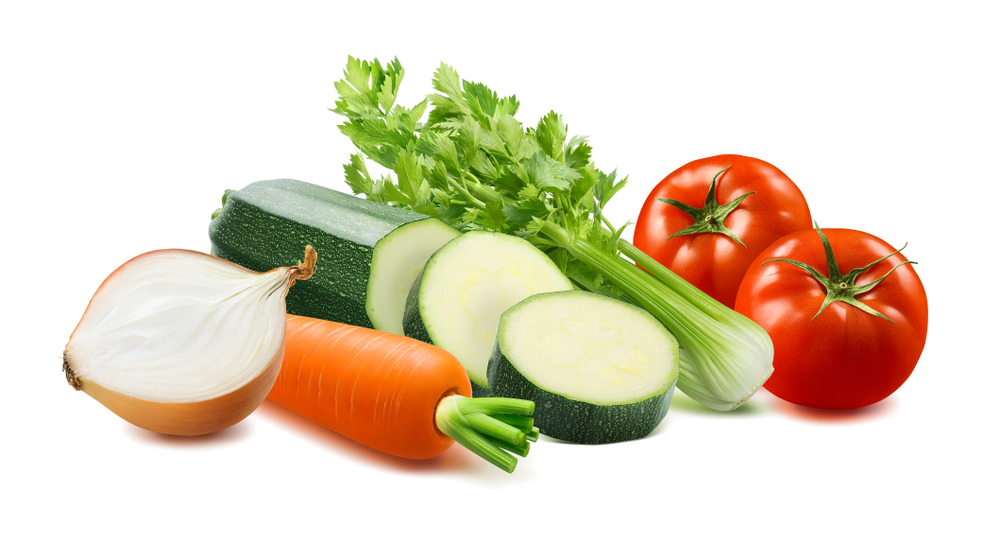Minestrone For All Seasons

Minestrone may well be the most popular Italian soup made today. It is now in fact, as well known to the world as pizza or pasta. Minestrone means “big soup” and is in fact a large vegetable soup that reflects both seasonal and regional variations. When one thinks of minestrone, generally one tends to think of a thick soup made with a variety of vegetables.
Due to its unique origins and the absence of one traditional recipe, a bowl of minestrone can vary quite a bit from region to region depending on traditional cooking times, ingredients, and most importantly, the season.
Minestrone may range from a thick and dense texture with boiled-down vegetables that may be enriched with pasta or rice, to a more broth based soup with large quantities of diced and lightly cooked vegetables that may or may not include meats. Unfortunately, many folks tend to steer away from making any type of soup during the warmer months, but a summer minestrone when served either at room temperature, or slightly warm, and can be a delicious, light meal for the long hot days of summer.
What better time to make a vegetable soup than in the summer when the supply of fresh, seasonal vegetables is at it’s peak?
 I remember years ago when we lived in Milan, walking into one of our favorite traditional Milanese restaurants and they would have bowls of thick minestrone enriched with rice, sitting on the counter waiting to be enjoyed.
I remember years ago when we lived in Milan, walking into one of our favorite traditional Milanese restaurants and they would have bowls of thick minestrone enriched with rice, sitting on the counter waiting to be enjoyed.
The soup was served at room temperature with just a drizzle of extra virgin olive oil and some cracked black pepper on top and it quickly became one of my favorite warm weather first course choices.
The regional differences within Italy are reflected in the various minestrone recipes found there. In Liguria, fresh herbs are always used to season the soup where as further south, a parmesan or pork rind is considered essential for developing good flavor.
In the northern regions such as Piedmont or Lombardy, rice is most commonly used as a thickener while bread may be used in Tuscany, and pasta further south. It also seems the further south you go in Italy the heartier and more full-bodied the ingredients that are being used are; including more tomatoes, garlic, wine, and even beef broth or bones for flavor.
I believe to make a really great minestrone you need to pay attention to the season and utilize the specific vegetables each season has to offer. In the spring I like to add fresh peas, lava beans, baby artichokes, or even diced asparagus such as in my Minestrone Verde. As summer approaches, I add zucchini, summer squash, baby spinach, diced green beans, and cherry tomatoes into my minestrone pot, and often add rice and serve the soup at room temperature as I do in my Summer Minestrone.
 In the fall, cubes of pumpkin, and rich, chopped greens such as chard, kale, or chicory celebrate the seasonal change to cooler temperature, and during the winter, potatoes, canned tomatoes, canned beans, and winter squash are often added and the soup can be then be served very warm as in my Winter Minestrone. No matter what the season, onions, celery, and carrots are considered essential to any good minestrone.
In the fall, cubes of pumpkin, and rich, chopped greens such as chard, kale, or chicory celebrate the seasonal change to cooler temperature, and during the winter, potatoes, canned tomatoes, canned beans, and winter squash are often added and the soup can be then be served very warm as in my Winter Minestrone. No matter what the season, onions, celery, and carrots are considered essential to any good minestrone.
The addition of meat to flavor the soup is another individual choice, and I do at times add chopped pancetta, or a big rind of prosciutto to my soup pot, particularly during the cooler months.
To serve a bowl of minestrone, you can add golden brown croutons, a drizzle of extra virgin olive oil, some grated Parmesan or Pecorino cheese, or as they do in Liguria, a drizzle of pesto Genovese which really brings the soup to life.
There seems to be two basic methods of preparing minestrone, minestrone col soffritto, or minestrone crudo. In the “col soffritto” method, diced vegetables are first sauteed in a fat such as olive oil, or lard, sometimes along with diced pancetta. The vegetables go into the pot depending on how long they will take to cook, and after they are sauteed, they then go into the stockpot where they are covered with water or broth and slowly simmered until the soup has thickened.
 Minestrone crudo is a little healthier version as the diced vegetables are simply dumped into a pot without first sautéing them, and are gently simmered with water or broth.
Minestrone crudo is a little healthier version as the diced vegetables are simply dumped into a pot without first sautéing them, and are gently simmered with water or broth.
Pasta is often added at the end, as is extra virgin olive oil and fresh, chopped herbs. Minestrone to me is like a multivitamin in a bowl of goodness and should be enjoyed year round. It is a soup that is even better prepared the day before it is served, and although it is delicious served at room temperature, it should never be served chilled.
There is no right or wrong way to make minestrone, and you may certainly vary the ingredients to suit your own personal taste. If you use fresh, ripe ingredients, little else is needed to flavor the soup apart from a long, slow cooking time to allow the flavors to develop and meld. Experiment with your own favorite seasonal vegetables and flavorings and create your own perfect bowl of minestrone!
Buon Appetito!
Deborah Mele
Check out some of my favorite Minestrone Recipes On IFF!



